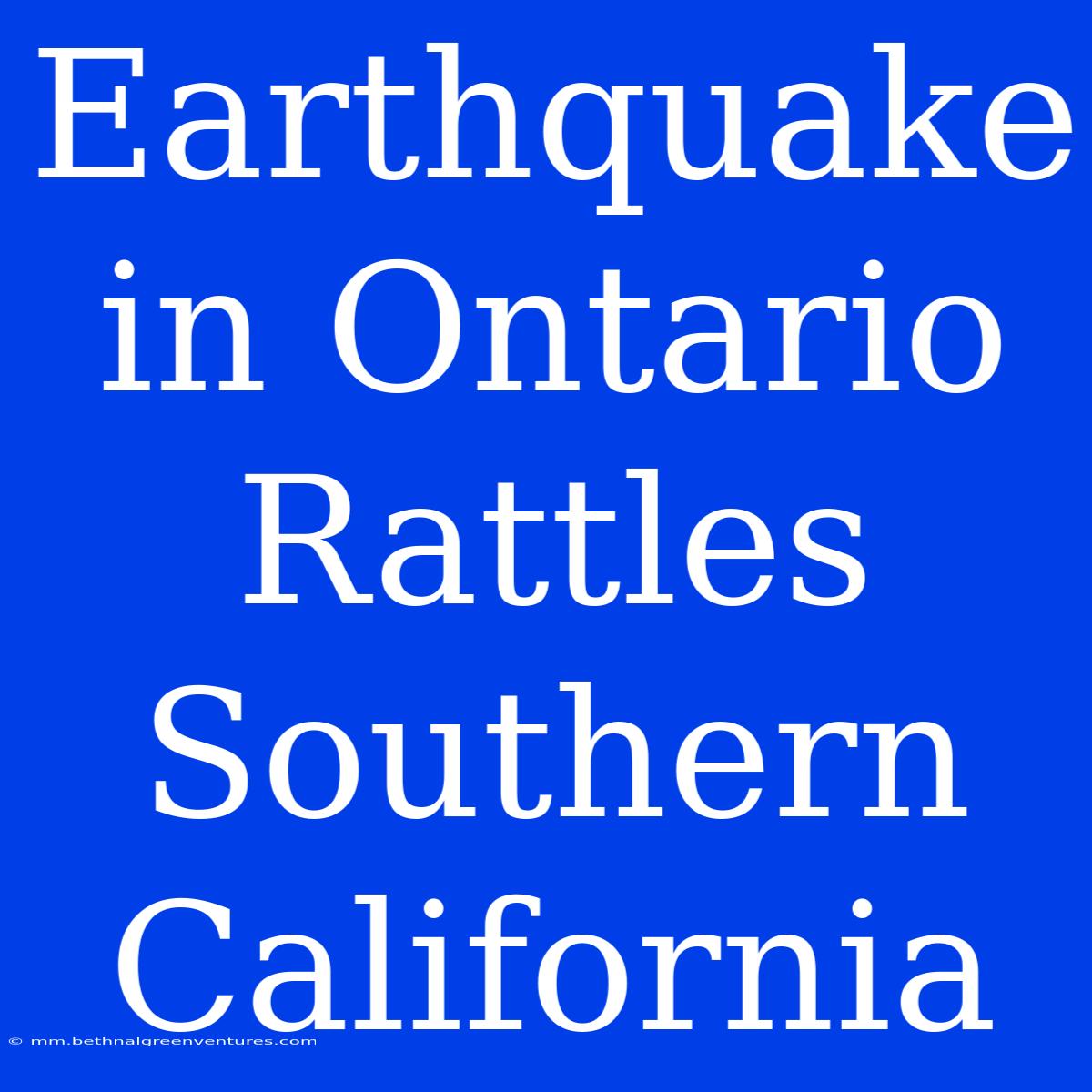An Earthquake in Ontario Rattles Southern California: A Seismic Mystery
Can an earthquake in Canada shake California? It might seem impossible, but a recent earthquake in Ontario, Canada, sent ripples across the border, causing tremors felt in Southern California. This unexpected phenomenon raises questions about seismic activity and its potential reach. This event highlights the intricate connection between seemingly distant geological events and the importance of understanding our planet's dynamic nature.
Editor Note: A magnitude 5.4 earthquake struck near the town of Deep River, Ontario on [Insert Date], sending tremors as far south as Southern California. This unexpected seismic event sparked widespread curiosity and questions about the connection between distant earthquakes and their effects.
Why is this important? While California is known for its seismic activity, this event challenges our understanding of earthquake impacts. The Ontario earthquake, though relatively small, demonstrates that tremors can travel vast distances, potentially affecting regions far from their epicenter. This raises concerns about the potential for similar events to disrupt sensitive infrastructure and cause damage in unexpected locations.
Our analysis: To explore this intriguing event, we delved into the latest research on earthquake propagation, examining the geological factors that might have contributed to the tremors reaching Southern California. We analyzed seismic data and expert opinions to shed light on the phenomenon and its potential implications.
Key Takeaways from this event:
| Key Takeaway | Description |
|---|---|
| Long-distance propagation: Earthquakes, even relatively small ones, can send seismic waves across vast distances. | |
| Complex geological interactions: The Earth's geological structure plays a crucial role in how seismic energy travels and impacts distant regions. | |
| Importance of preparedness: This event underscores the need to be prepared for earthquakes, regardless of location, as tremors can reach unexpected places. |
Ontario Earthquake: A Distant Tremor
The Ontario earthquake, while originating in Canada, caused noticeable tremors in Southern California. This phenomenon can be explained by the Earth's crustal structure and the way seismic waves propagate.
Seismic Waves and Propagation:
- Introduction: When an earthquake occurs, it releases energy in the form of seismic waves that travel through the Earth's crust. These waves can be categorized into different types based on their motion and speed.
- Body Waves: Body waves, which travel through the Earth's interior, are responsible for the initial shaking felt during an earthquake. These waves include primary waves (P-waves) and secondary waves (S-waves).
- Surface Waves: Surface waves travel along the Earth's surface and are responsible for the prolonged shaking that can cause significant damage. These waves are slower than body waves but can travel greater distances.
The Role of Geology:
- Introduction: The geological structures of the Earth's crust significantly influence the direction and intensity of seismic waves.
- Fault Zones: Earthquakes primarily occur along fault zones, where tectonic plates interact and move past each other. The geological features of these fault zones, including their depth, length, and orientation, impact how seismic energy is released and distributed.
- Rock Types: Different rock types have varying abilities to transmit seismic waves. Hard, dense rocks generally transmit waves more efficiently than softer, less dense rocks.
- Crustal Thickness: The thickness of the Earth's crust can also affect seismic wave propagation. Thicker crust can create more complex pathways for waves to travel, potentially leading to unexpected tremor patterns.
Exploring the Connection
- Introduction: The Ontario earthquake's ability to cause tremors in Southern California highlights the complex interplay between geological factors and seismic wave propagation.
- Geological Path: The seismic waves from the Ontario earthquake likely traveled through the Earth's crust, potentially following specific geological pathways that facilitated their long-distance propagation.
- Seismic Reflection: The waves may have experienced reflections and refractions as they encountered different rock types and geological formations. This process could have altered their direction and intensity, ultimately leading them to reach Southern California.
Conclusion
The earthquake in Ontario, Canada, that caused tremors in Southern California serves as a reminder of the interconnectedness of our planet and the unpredictable nature of seismic activity. Understanding the geological factors that contribute to long-distance earthquake propagation is crucial for improving seismic hazard assessments and ensuring better preparedness in regions considered relatively earthquake-free. This event also emphasizes the importance of ongoing research and monitoring to improve our understanding of earthquake behavior and mitigate their potential risks.
